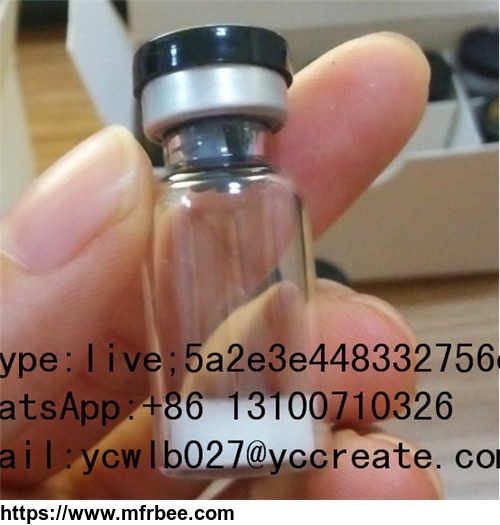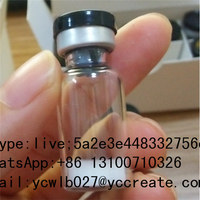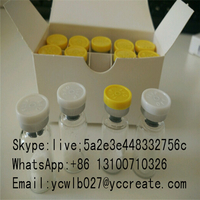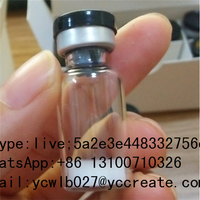Dexamethasone
Specifications
Product Details
Basic Info.
Model NO.:14899-36-6
Other Name:Dexamethasone Palmitate
CAS:14899-36-6
Molecular Formula:C38h59fo6
Molecular Weight:630.87
Einecs:None
Melting Point:None
Assay:99%
Export Markets:Global
Additional Info.
Trademark:Saichuang
Packing:Skilled Packing Team Give You The Best Service
Standard:USP, EP standard
Origin:China
HS Code:3003101300
Production Capacity:500ton
Product Description
1. Quick Detail:
Dexamethasone palmitate
Synonyms: Dexamethasone-21-palmitate;DXM-21-palmitate;Limethason;Limethasone;Lipotalon;Palmitic acid, 21-ester with 9-fluoro-11β,17,21-trihydroxy-16α-methylpregna-1,4-diene-3,20-dione
(8CI);Pregna-1,4-diene-3,20-dione, 9-fluoro-11,17-dihydroxy-16-methyl-21-[(1-oxohexadecyl)oxy]-, (11β,16α)-;Pregna-1,4-diene-3,20-dione, 9-fluoro-11β,17,21-trihydroxy-16α-methyl-, 21-palmitate
(6CI, 8CI)
CAS: 14899-36-6
MF: C38H59FO6
MW: 630.87
Chemical Properties Colourless Thick Oil
Usage A corticosteroid prodrug for the treatment of eye disorders.
Packing: 5KG/TIN or as required
2. Description:
Dexamethasone palmitate (DXP) is a lipophilic prodrug of dexamethasone (DXM), a potent corticosteroide used to treat a variety of ophthalmic diseases. The aim of the study was to characterize the
sustained release capacity (in rabbit), efficacy (in rat and rabbit), and safety (in rabbit, cat, and minipig) of intravitreal (IVT) DXP emulsions in preclinical models.
3.Application:
Oil-in-water emulsions of DXP were administered by IVT injections in rats, rabbits, cats, or minipigs. Efficacy was assessed in rabbits by the inhibition of VEGF-induced vascular leakage and in
rats by inhibition of laser-induced choroidal neovascularization. Concentrations of DXP and DXM in aqueous humor, vitreous, retina, choroid, and blood were determined to characterize the ocular and
systemic pharmacokinetic (PK) profile. Complete ophthalmic examinations (indirect ophthalmoscopy, slit-lamp biomacroscopy, electroretinography, tonometry) were performed to assess the ocular safety
of IVT DXP doses up to 2,600 μg in minipig, followed by histopathologic examinations. A validated feline model of DXM-induced elevated intraocular pressure (IOP) was used to assess the ocular
hypertensive impact (i.e., the safety) of an IVT injection of DXP emulsion.
Dexamethasone-17-acetate, a corticosteroid, is similar to a natural hormone produced by your adrenal glands. It often is used to replace this chemical when your body does not make enough of it. It
relieves inflammation (swelling, heat, redness, and pain) and is used to treat certain forms of arthritis; Skin, blood, kidney, eye, thyroid, and intestinal disorders (e. G., colitis); Severe
allergies; And asthma. Dexamethasone-17-acetate is also used to treat certain types of cancer.
Dexamethasone-17-acetate comes as a tablet and a solution to take by mouth. Your doctor will prescribe a dosing schedule that is best for you. Follow the directions on your prescription label
carefully, and ask your doctor or pharmacist to explain any part you do not understand. Take Dexamethasone-17-acetate exactly as directed. Do not take more or less of it or take it more often than
prescribed by your doctor.
Do not stop taking Dexamethasone-17-acetate without talking to your doctor. Stopping the drug abruptly can cause loss of appetite, upset stomach, vomiting, drowsiness, confusion, headache, fever,
joint and muscle pain, peeling skin, and weight loss. If you take large doses for a long time, your doctor probably will decrease your dose gradually to allow your body to adjust before stopping
the drug completely. Watch for these side effects if you are gradually decreasing your dose and after you stop taking the tablets or oral liquid, even if you switch to an inhalation corticosteroid
medication. If these problems occur, call your doctor immediately. You may need to increase your dose of tablets or liquid temporarily or start taking them again.
- Contact: Michael Van











